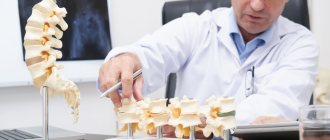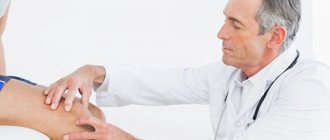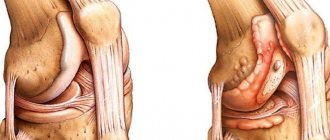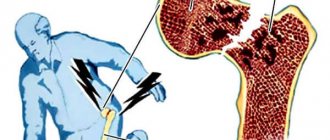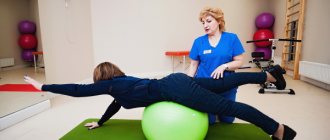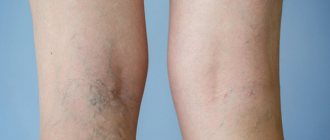- Gallery
- News
- Reviews
- Vacancies
- Licenses
- Insurance partners
- Controlling organizations
- Schedule for receiving citizens for personal requests
- What you need to know about coronavirus infection?
- Rules for patients
- Important! Visiting a clinic during self-isolation
- Online consultation with a doctor
- to corporative clients
- Documentation
Osteoporosis is the development of degenerative processes in the intervertebral discs, but most of the complaints with this disease are associated with its neurological complications, which are classified into 4 stages:
Osteoporosis is characterized by a progressive decrease in bone mass (per unit bone volume) and disruption of the microarchitecture of bone tissue, leading to increased bone fragility. A decrease in bone mineral density by 1–2.5 standard deviations from standard values (according to photon or X-ray densitometry), which is usually not accompanied by pathological bone fractures, is usually designated as osteopenia, and a decrease of more than 2.5 standard deviations is referred to as osteoporosis.
In recent years, interest in the problem of spinal osteoporosis has increased sharply. This is due to the high prevalence of this condition, which is steadily growing due to increasing life expectancy, the severity of complications, the possibility of its preclinical diagnosis using modern densitometric methods, and the emergence of new effective treatment methods. Millions of people suffer from osteoporosis around the world. The disease leads to enormous socio-economic damage and, without exaggeration, should be classified as one of the most important medical and social problems of humanity.
What is osteoporosis
Osteoporosis is a bone disease. It is characterized by thinning of bone tissue. It can affect any part of the skeleton, including the spine, pelvic bones, and skull.
The disease occurs both due to aging and due to the leaching of calcium and other beneficial substances from the body. In addition, the division of cells responsible for building bone and maintaining it in a stable state is inhibited. Sometimes the disease manifests itself due to local lesions. For example, osteoporosis of the sella turcica occurs due to constant pressure from the tumor.
The disease is dangerous because the bones become too fragile and can break quickly. They also lose an important protective function; for example, the spinal column can no longer properly protect the spinal cord.
One of the additional factors that worsens the patient’s condition is bone pain due to osteoporosis.
Osteoporosis - symptoms and treatment
Treatment goals:[4][12]
- preventing or reducing the number of fractures;
- increasing bone density;
- improvement of bone remodeling markers.
First of all, to prevent fractures in osteoporosis, it is necessary to follow lifestyle correction measures:[12][13]
- gaining weight and doing exercises to strengthen muscles and improve balance;
- ensuring optimal calcium and vitamin D intake as an adjunct to active therapy.
Drug treatment
Drug therapy for osteoporosis is prescribed to postmenopausal women and men over 50 years of age in the following cases:[4]
- fracture of the hip or vertebra;
- DXA examination results - T-score equal to or less than -2.5 SD for the femoral neck or vertebrae after excluding causes of secondary osteoporosis;
- low bone mass (T-score between –1.0 and –2.5 SD for the femoral neck or spine) and a 10-year FRAX probability of 3% or more for a hip fracture or 20% or more for a major osteoporotic fracture).
Federal clinical guidelines for the diagnosis, treatment and prevention of osteoporosis provide for the use of:[4]
- antiresorptive drugs - aimed at suppressing bone resorption by acting on osteoclasts (bisphosphonates, denosumab);
- anabolic drugs - aimed at enhancing bone formation (teriparatide).
BISPHOSPHONATES
These drugs disrupt the functioning of osteoclasts, preventing bone destruction. Accumulating in bone tissue, they have a delayed effect with the effect remaining for months after treatment is discontinued.
Adverse events . When bisphosphonates are used orally, adverse events from the gastrointestinal tract are possible - difficulty swallowing, esophagitis and gastritis. With intravenous administration of bisphosphonates, a flu-like reaction may occur - increased body temperature, pain in joints and muscles, weakness, etc. The severity of such symptoms decreases significantly after repeated intravenous administrations, and their complete disappearance occurs after 2-3 days. The course of a flu-like reaction can be alleviated with the help of non-steroidal anti-inflammatory drugs. In rare cases, cases of osteonecrosis of the jaw have occurred during long-term use of bisphosphonates (more than five years).
Contraindications and restrictions:
- hypocalcemia;
- severe renal dysfunction (creatinine clearance less than 35 ml/min);
- violation of mineral metabolism (vitamin D deficiency, osteomalacia, hypophosphatasia, hypophosphatemia);
- breast-feeding;
- children and adolescents under 18 years of age.
Taking bisphosphonates orally is contraindicated in cases of diseases of the esophagus that impair its patency, or a person’s inability to remain in an upright position for 30 minutes. These drugs are used with caution for gastrointestinal diseases in the acute phase.
Application . All bisphosphonate drugs in tablet form (alendronate, risendronate, ibandronate) are taken in the morning on an empty stomach 30 minutes before meals. The tablet is washed down with a glass of water, after which it is necessary to remain in an upright position for about 30-40 minutes, without taking food or liquid other than water.
Intravenous medications are used once every three months (ibandronate) or once a year (zoledronate).
DENOSUMAB
This drug is designed to block the process of attracting active osteoclasts. Unlike bisphosphonates, denosumab reduces osteoclast production without affecting mature cell function. The drug does not accumulate in bone tissue, its effect ceases after treatment. It is safe in cases of impaired renal function.
Denosumab is available as a pen and is administered subcutaneously every six months.
Possible adverse events:
- skin reactions;
- bloating;
- hypocalcemia.
Contraindications:
- hypocalcemia;
- hypersensitivity to the drug;
- pregnancy or lactation.
TERIPARATIDE
This drug has a predominant effect on osteoblasts, increasing their life expectancy. In this way, it enhances bone formation and activates modeling in individual areas of the skeleton. Recommended for use by patients with severe osteoporosis and when treatment with other drugs is ineffective.
Teriparatide is administered subcutaneously at a dose of 20 mg once daily, stored in the refrigerator.
Adverse effects : dizziness, leg cramps.
Contraindications:
- hypercalcemia;
- hyperparathyroidism;
- osteogenic sarcoma;
- uncovered growth zones;
- history of skeletal radiation;
- pregnancy or lactation;
- malignant bone formation or bone metastases;
- allergic reaction to the drug.
CALCIUM AND VITAMIN D
All drugs aimed at combating osteoporosis should be taken in combination with calcium (500-1000 mg/day) and vitamin D (800-1000 IU/day), since the effectiveness of this combination has been clinically proven.
In addition, potentially treatable causes of secondary osteoporosis, if identified, are treated.
ANALGESICS
Another goal of treatment for patients with an osteoporotic fracture is pain control, which can be quite severe with vertebral compression fractures and seriously interferes with quality of life. In this case, painkillers are prescribed, which are taken orally in the form of tablets or capsules as needed or on a regular basis. Physiotherapy and transcutaneous electrical nerve stimulation are also used for pain relief.[5]
Other treatments
A good effect in the treatment of osteoporosis is provided by mechanical support of the spine and, in some cases, orthoses for the thoracic spine (orthopedic corsets). They perform a supporting function, removing part of the axial load from the thoracic and lumbar spine, and limit movements in the spine. It is recommended to wear an orthosis if the patient intends to walk or stand for more than an hour, but it is important to limit the time of wear as prolonged immobilization promotes bone demineralization.
Surgical treatment is used for fractures of the femoral neck, as well as for severe deformities of the chest that have arisen against the background of multiple compression fractures of the vertebrae.
During the rehabilitation period after fractures, classes with a specialist in physical therapy (physical therapy), breathing exercises, and exercises to strengthen the pectoral and intercostal muscles are recommended.[12]
Localization of pain
In most cases, pain is associated with the location of the disease. However, this does not mean that if you have back pain, then only the spine suffers. Let's consider three main areas of localization of such sensations.
Back
One of the most common manifestations. Pain in osteoporosis of the spine is most often concentrated in the lumbar region. Their main danger is that not every doctor can immediately make the necessary diagnosis. Some even attribute such manifestations to kidney disease. As a result, a person is treated for a long time with drugs, many of which only provoke calcium leaching and aggravate the situation.
Many patients find out about the causes of their illness very late, when cracks in the vertebrae, numbness of the limbs, and stiffness of movement begin to appear.
Joints
There are no restrictions on the location of the affected joints. In this case, a person sometimes finds it difficult to turn his hand or it becomes difficult for him to walk.
The hip joint and knees are especially often affected. The reason is that it is these parts of our skeleton that bear the greatest load. Here, too, there is the problem of incorrect diagnosis - doctors attribute many symptoms to arthrosis and arthritis, and fighting them can sometimes worsen osteoporosis.
This disease is often accompanied by inflammation - tissue temperature increases in the affected area and swelling appears.
Lower limbs
The disease can manifest itself both during short walks and when walking long distances. In this case, the patient will feel not only pain, but also fatigue. The only way to relieve sensations without medications is rest - the more time you spend in peace, the faster the pain calms down.
How to relieve pain with osteoporosis
It is important to answer the question of how to relieve pain during osteoporosis, be it an acute attack or chronic discomfort. There are three categories of drugs - anti-osteoporotic, non-steroidal and non-opioid analgesics.
Antiosteoporotic drugs
The use of such medications is aimed at eliminating the disease itself - the pain goes away precisely by restoring the strength and required thickness of the bone tissue. These include varieties such as Heparin and Cyclosporin.
Nonsteroidal anti-inflammatory drugs
This category includes drugs of local and systemic action. Among them are Voltaren, Ibuprofen and Diclofenac. Most often used when an inflammatory process begins. Suitable for application to joints and skin, for example in the lumbar region.
Non-opioid analgesics
The main advantage of such drugs for reducing pain is that they do not have a stupefying effect on a person. There are many types of such medications: Ibuprofen, Ketoprofen and others.
How to diagnose
To determine the diagnosis, anamnesis is important - doctors use the FRAX (fracture risk assessment tool) questionnaire, which lists conditions that contribute to spinal osteoporosis.
Laboratory diagnostics is aimed at confirming somatic pathology that occurs with metabolic disorders of the skeleton - hypogonadism, diabetes mellitus, thyrotoxicosis, genetic diseases, etc. If osteoporosis is suspected, the following determination is prescribed:
- biochemical markers of bone remodeling
- levels of calcium, phosphorus, magnesium
- thyroid and parathyroid hormones
- 25-OH vitamin D content and other biochemical parameters.
Imaging tests include:
- Basic - standard x-ray examination of the thoracic and lumbar spine, bone density screening - densitometry/dual-energy x-ray absorptiometry
- Additional - multislice computed tomography, magnetic resonance scanning, skeletal scintigraphy, etc.
Electrotherapy
It is important not only to understand the pain associated with osteoporosis, but also to choose the appropriate method of physical therapy. One of the areas is electrotherapy. During the session, the tissue begins to be affected by an electric field. This is aimed at warming the skin, stimulating blood circulation and metabolism.
Among the limitations in using the method is the presence in the patient’s body of a pacemaker or various metal products that could resonate with the created field.
Exercise therapy
Although doctors often prescribe exercise therapy when a patient has back pain due to osteoporosis, it can be dangerous. In particular, you should not work with loads, because a fracture may occur. You should avoid putting stress on your joints at all costs. If you have a symptom such as an acute severe attack of pain, you should also avoid exercise therapy.
The procedure is prescribed if the patient has chronic pain. Exercises are needed to strengthen human muscles. The stronger they are, the less stress on the bones. It is increased stress that often causes pain.
Prevention of osteoporosis
There are various ways to slow down the process of bone destruction. Prevention of osteoporosis should begin in youth, when it is possible to form more massive bones, which will take additional time to weaken decades later. Preventive measures include:
- regular exercise and moderate muscle training (special exercises for training different muscle groups slow down bone loss),
- healthy and balanced diet with adequate intake of vitamins, proteins and calcium.
A combination of physical activity and proper nutrition can keep bones and muscles healthy for many years.
Wearing a corset
Often patients are also prescribed to wear a corset. This is not a therapeutic method, but a good way to reduce back pain, since the spinal column is fixed and this prevents numerous pain manifestations from occurring.
Instead of a corset, you can wear cuffs or a strong bandage on other parts of the body. In case of damage to the spine in the cervical region, people wear hard collars.
Remember that the selection of a suitable corset should be carried out exclusively by a doctor. He knows all the anatomical features of the patient, as well as the intensity of his disease. As a result, he will be able to choose an option with the desired level of rigidity.
As you can see, the answer to the question of whether there is pain with osteoporosis can be answered in the affirmative. The main thing is to choose the right method for their relief and subsequent treatment of the disease.
Classification of osteoporosis
Osteoporosis is usually divided into primary and secondary.
The causes of primary osteoporosis are age-related loss of bone tissue (senile osteoporosis) and menopausal conditions in women (postmenopausal osteoporosis). In cases where, after a thorough examination, no obvious cause is found, osteoporosis is designated as idiopathic. The development of primary osteoporosis can be facilitated by the lack of adequate physical activity, smoking, alcohol abuse, impaired production and metabolism of vitamin D, and relative insufficiency of gonadal function. Secondary osteoporosis may be associated with treatment with corticosteroids, hypogonadism, thyrotoxicosis, myeloma, metastatic bone lesions, rheumatic diseases, liver pathology and other diseases.

